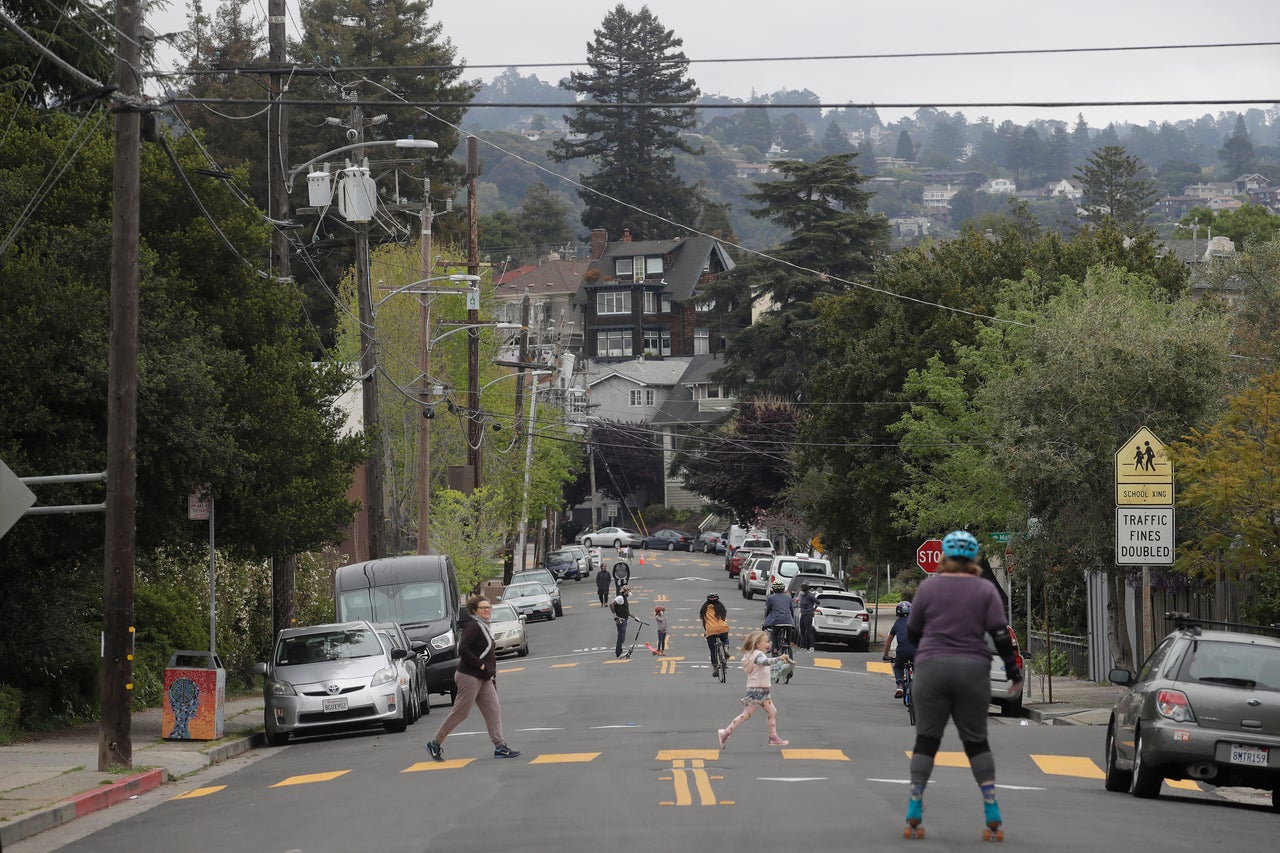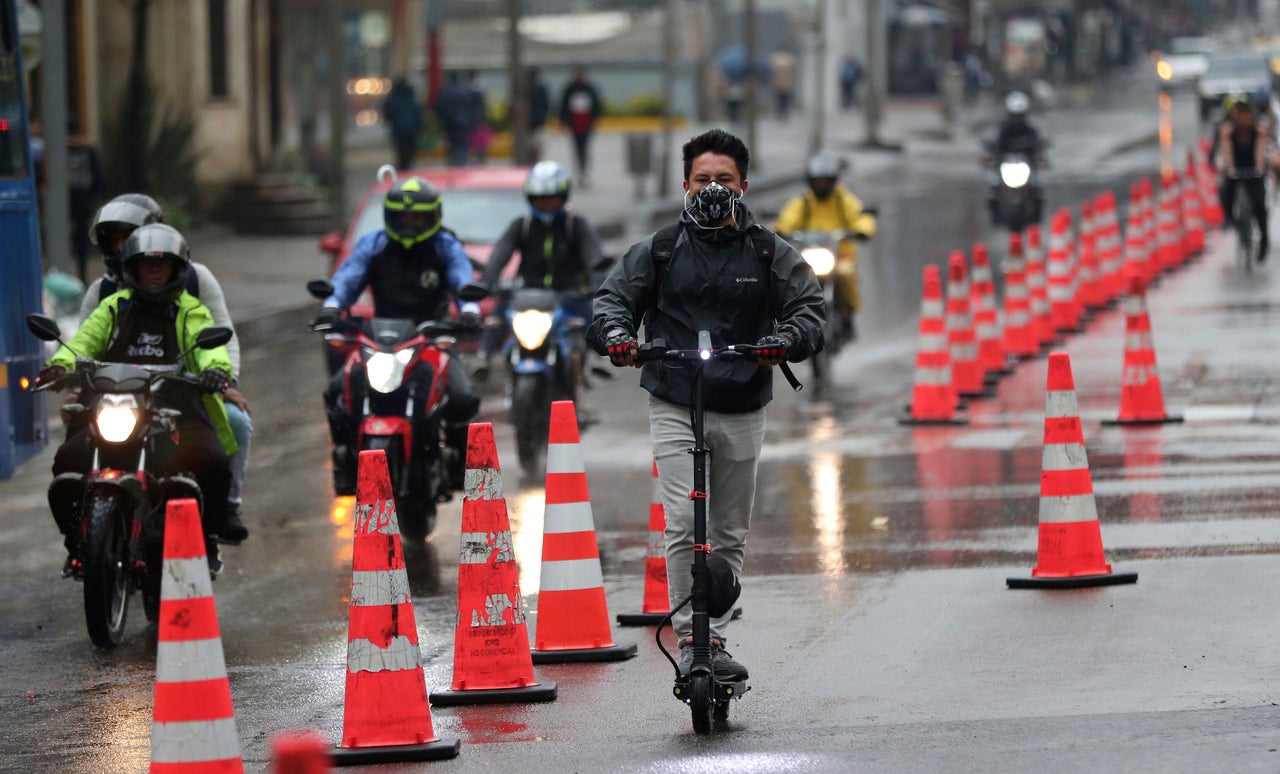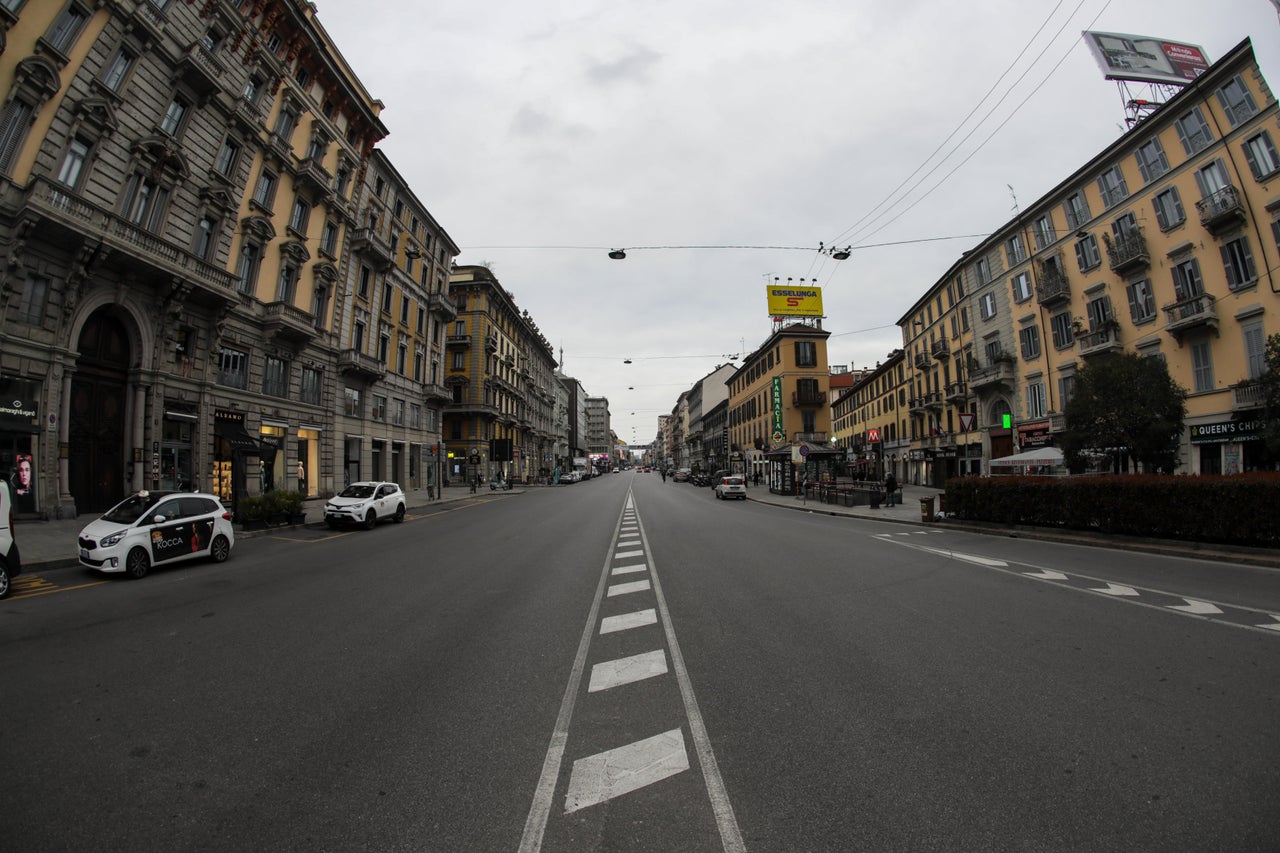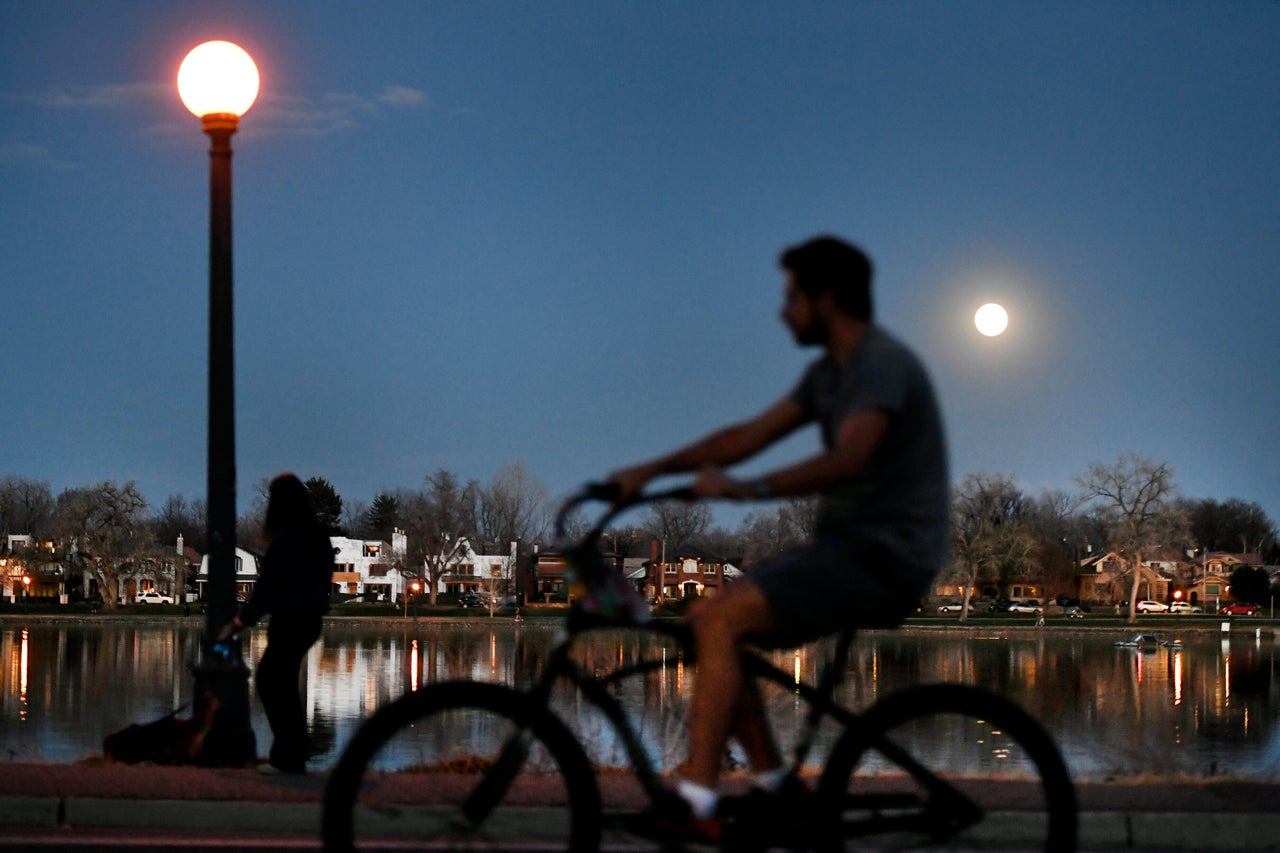Like much of California, the city of Oakland has been under a shelter-in-place order since March, leaving its population of around 430,000 few options for getting out of the house other than to go for a walk.
But even that has suddenly become potentially perilous. Social distancing requires that people stay six feet apart to diminish the risk of passing the coronavirus to others, but when sidewalks are as narrow as four or five feet, a stroll down the block can become a game of high-stakes chicken.
In April, however, Mayor Libby Schaaf announced that the Bay Area city would close 74 miles of streets ― 10% of its grid ― to through traffic for the duration of the COVID-19 crisis. The program, called Oakland Slow Streets, provides people on foot, bike, skateboard or scooter, along with wheelchair users and parents pushing strollers, the freedom to exercise in the fresh air ― and the space to avoid spreading the virus.

Oakland’s plan is particularly large in scale, but the city is just one of the dozens of communities in the United States and worldwide to close streets or change traffic patterns in recent weeks.
Bogotá, Colombia, and Mexico City have painted miles of emergency bike lanes in an effort to provide essential workers with alternatives to crowded public transit, and German cities have widened bike paths. As car traffic drops, American municipalities have turned over vehicular lanes and on-street parking to pedestrians. Vancouver, Canada, banned cars in sprawling Stanley Park. (“Quiet. No exhaust. Sun. Ocean. Forest. Absolutely brilliant,” enthused one Vancouverite on Twitter after cycling through the car-free park.)
The trend represents a bright spot in an otherwise grinding news cycle ― and it may also offer a glimpse of a post-pandemic future in which cities are healthier, safer and more sustainable.
“It’s a scary time, but it’s also a real opportunity,” said Janette Sadik-Khan, chair of the National Association of City Transportation Officials, which recently released a toolkit to help city transportation departments fight the pandemic and make social distancing easier.
Responses to the pandemic, she said, are setting a precedent for the future of transportation: “Transportation planning used to be stuck in its ways, and nothing changed for years and years. Now, things are changing overnight.”

Much of our car-centric planning dates to an era when less was known about the personal automobile’s harmful impact on the environment and public health. But now we know that transportation not only accounts for more than one-quarter of U.S. greenhouse gas emissions, but also ozone, particulate matter and other pollutants that cause hundreds of thousands of premature deaths a year.
One recent study estimated that globally, tailpipe emissions led to 7.8 million years of life lost in 2015 alone. And that’s not even counting the 1.35 million annual deaths caused by vehicle crashes around the world.
Sam Schwartz, the “traffic guru” who served as New York City’s chief transportation engineer in the 1970s and ’80s― during which he coined the term “gridlock” ― understands firsthand the problems cars can cause for cities. But it wasn’t always this way, he pointed out.
“A hundred years or so ago, the pedestrian was king or queen of the streets, and they walked anywhere they wanted,” Schwartz said. “Sidewalks were very wide, people walked diagonally across streets, and the horse carriages and streetcars slowed for them. Everything moved at relatively slow speeds. And then along came the automobile.”
Speeding cars forced people to the edges of the streets, where they remained confined by laws mandating traffic signals and forbidding “jaywalking”― a term, Schwartz noted, that didn’t exist until drivers began using it in the early 20th century. And as cars took up more and more of the right of way, urban planners began to reengineer cities around them.
“We built cities that focused on getting people in cars from downtowns out to the suburbs, and that was not a good way to build a transportation system,” said Jennifer Toole, an urban planner in Maryland.
“We have communities that don’t have any sidewalks and don’t have outdoor public spaces, either. There are a lot of low-income parts of cities where the streets are too wide and too fast. Even before COVID-19, we knew our transportation system had given precious little space to people walking and biking and using wheelchairs. And now we’re seeing the ramifications of those decisions.”

In early April, Toole hosted a webinar for city officials around the country on how they could better accommodate pedestrians and cyclists during social distancing; the program attracted an audience of more than 1,400.
“I think people are not just interested for tomorrow or next week, but they’re also realizing that this is not going away soon and we need to figure out how to accommodate this in the future,” Toole said. “There’s going to be a lot of looking back and thinking about how we could have designed our cities to be prepared better for situations like this.”
“Even before COVID-19, we knew our transportation system had given precious little space to people walking and biking and using wheelchairs. And now we’re seeing the ramifications of those decisions.”
- Jennifer Toole, urban planner in Maryland
Around the world, city governments are scrambling to retrofit their streets for ballooning foot traffic and trying to anticipate the transportation needs of a post-pandemic world in which commuting to work might not be as necessary. (One analytics firm estimates that as many as 30% of us might still be working from home multiple days a week in 2021.)
While reallocating street space might look different for each community, some officials are looking to Europe, where, prior to the pandemic, many cities were already tipping the balance away from cars and toward pedestrians and cyclists.
Paris has pedestrianized the banks of the Seine, while Barcelona, Spain, is closing streets to through traffic within clusters of residential blocks called “superblocks.” Dutch woonerfs, or shared streets, allow cars but prioritize pedestrians, forcing motorists to slow to nonlethal speeds.
And Milan announced this week that it will be redesigning 22 miles of city streets to prioritize cycling and walking ― making new cycle lanes, wider sidewalks and imposing stricter speed limits.

Such schemes may be an easier sell in Europe, which has a long-established culture of walking and more leaders who grasp the dangers of climate change (although they have still faced pushback).
But there are U.S. examples as well. As New York City’s transportation commissioner under Mayor Michael Bloomberg, Sadik-Khan oversaw the pedestrianization of Times Square and the creation of dozens of plazas, along with nearly 400 miles of bike lanes. And even in the less-dense cities where car culture is more ingrained, many progressive officials have been looking to experiment. COVID-19 offers them a prime opportunity.
“We’ve been rethinking our streets for some time now,” said Minneapolis Public Works Director Robin Hutcheson, explaining that the city had a policy of incorporating improved walking and cycling access into street resurfacing as a way to encourage people to choose more sustainable modes. “That means sometimes there are fewer traffic lanes, or sometimes we make a trade-off with on-street parking, and generally people are supportive.”
Since the coronavirus appeared, these redesigns have become more ambitious. In addition to banning cars from parkways that traverse or circumscribe green space, city officials have closed 7 miles of city streets to provide space for cyclists and pedestrians, while also accelerating planned work to create protected bike lanes.
“As we’ve had a few weeks to roll some of these things out, we’re starting to think a little bit more creatively, and we plan to do even more,” Hutcheson said.
Some cities are using COVID-prompted city redesign to directly address inequalities. In Denver, Eulois Cleckley, executive director of Denver’s department of transportation and infrastructure, and his staff selected the locations of 5.5 miles of street closures by taking into account socioeconomic factors, concentrating closures in areas of high residential density and limited access to park space.

“We’ve seen people doing exactly what we want them to do,” Cleckley says, “which is go out, take a jog, bike or walk the dog. People are out there with their children taking advantage of this opportunity to get out of the house, exercise a bit — but at the same time, comply with the social distance order.”
For city officials, these temporary closures also offer lessons that could prove useful as Denver pursues “Blueprint Denver,” a transportation-planning directive it adopted in 2018 that dictates: “On all streets, prioritize people walking over other modes of transportation.”
In line with that goal, the city will open its first, long-in-the-works shared street, the 39th Avenue Greenway, later this year. Inspired by Dutch woonerfs, it will prioritize pedestrians while still allowing cars. That’s unusual in the United States, Cleckley says, but he hopes the COVID-related street closures will have helped prepare Denverites to use the greenway and similar streets in the future.
“It’s something new, and sometimes we can be a little hesitant about trying new things,” said Cleckley. “But I think during this time, a lot of us are willing to step up and think about how different our streets can look.”
This story is published as part of Covering Climate Now, a global journalism collaboration strengthening coverage of the climate story.
For more content and to be part of the “This New World” community, follow our Facebook page.
HuffPost’s “This New World” series is funded by Partners for a New Economy and the Kendeda Fund. All content is editorially independent, with no influence or input from the foundations. If you have an idea or tip for the editorial series, send an email to thisnewworld@huffpost.com.
A HuffPost Guide To Coronavirus
- Stay up to date with our live blog as we cover the COVID-19 pandemic
- What happens if we end social distancing too soon?
- What you need to know about face masks right now
- How long are asymptomatic carriers contagious?
- Lost your job due to coronavirus? Here’s what you need to know.
- Everything you need to know about coronavirus and grief
- The HuffPost guide to working from home
- What coronavirus questions are on your mind right now? We want to help you find answers.
- Everyone deserves accurate information about COVID-19. Support journalism without a paywall — and keep it free for everyone — by becoming a HuffPost member today.